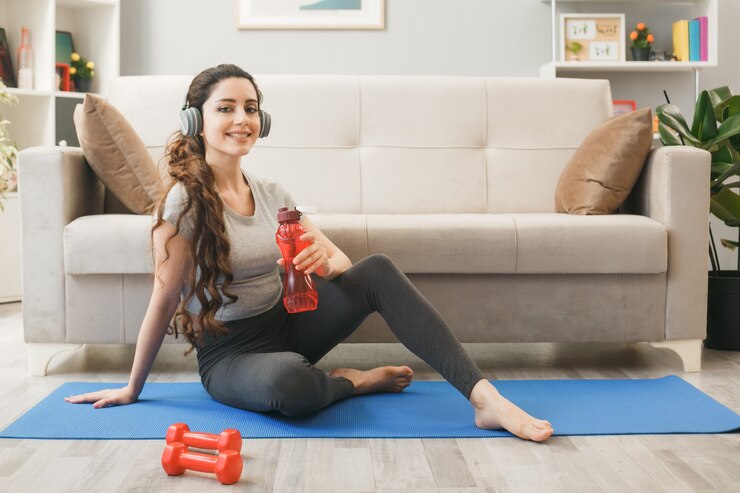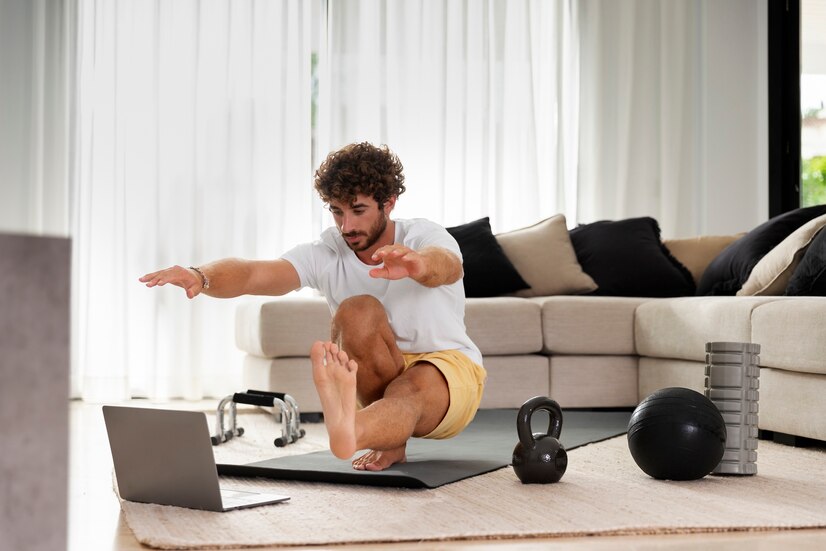
In our Your Guide To Simple Home Workout section we delve into the world of fitness at your fingertips. Discover how to kickstart your health journey from any corner of your home. We’ll guide you through setting achievable fitness goals and how to create an inviting workout space even in the smallest of areas. Not only that we will also introduce you to easy yet effective exercises that require minimal or no equipment.
Our focus is not just on the ‘how-to’ but also on keeping you motivated and engaged. You’ll learn to craft a simple home workout routine that fits seamlessly into your life, understand the importance of nutrition and hydration and how to track your progress. Whether you’re squeezing in a quick session before work or dedicating a weekend morning to fitness, our guide is here to ensure your home workout journey is both enjoyable and rewarding.
Getting Started with Simple Home Workout
Beginning your simple home workout journey is an empowering step towards better health and fitness. Whether you’re new to exercise or adapting to home training this section is designed to guide you through the initial setup. From setting achievable fitness goals to creating your ideal workout space we cover the essentials to kick start your home fitness routine effectively and enjoyably.

Setting Realistic Fitness Goals:
When setting fitness goals, it’s essential to tailor them to your individual needs and lifestyle. Plan SMART Goals (or visit www.acefitness.org) for yourself as they will help you realistically assess what you can achieve given your current fitness level, time constraints, and resources. Its not just about setting a goal but also understanding the steps required to achieve it. This could involve breaking down a larger goal into smaller more manageable tasks like increasing workout frequency or duration gradually.
Reflect on what motivates you and use this as a driving force behind your goals. Whether its improving health, gaining strength or enhancing wellbeing choose goals that inspire and motivate you. Regularly revisiting and adjusting these goals can also keep your workouts aligned with your evolving fitness journey.
Creating A Simple Home Workout Space:
Your simple home workout space should be a designated area where you can exercise comfortably and without distractions. It doesn’t need to be spacious, even a small corner can be transformed into an effective workout area. Ensure the space is well ventilated, has enough light and is free from potential hazards. Having a dedicated space can also psychologically prepare you for regular workouts in helping to establish a routine.
Consider the type of workouts you’ll be doing and set up your space accordingly. If you’re into yoga or Pilates you might want a softer surface like a yoga mat. For more dynamic workouts ensure you have enough room to move around safely. Personal touches like plants, inspiring quotes or your favorite workout gear can make the space more inviting and motivating.
Necessary Equipment With Basics:
Starting with basic equipment is both cost effective and space saving. A yoga mat is essential for providing a comfortable surface for floor exercises. It also helps in defining your workout area. Resistance bands are another versatile tool they come in different strengths and can be used for a wide range of exercises, from warm ups to strength training.
While additional equipment like dumbbells can enhance your workout, its important to remember that many effective exercises don’t require any equipment at all. Bodyweight exercises like push-ups, sit-ups and squats are great for building strength and can be done anywhere. These exercises also offer the flexibility to modify intensity and difficulty as per your fitness level.
Simple and Effective Exercises
Engaging in simple yet effective exercises at home can be a game changer for your fitness routine and its also the essential part of simple home workout. These exercises are designed to require minimal equipment making them accessible to everyone. From beginners to seasoned fitness enthusiasts these exercises offer a foundation for building strength, endurance and overall health.

Bodyweight Exercises for Beginners:
Squats, push ups and lunges are ideal for beginners due to their simplicity and effectiveness. For beginners don’t forget to explore our “Home Workout For Beginners” section where we discuss how to perform workouts at home efficiently and effectively. Squats engage the lower body, strengthening the thighs, hips and buttocks, while also improving flexibility. Push ups on the other hand target the upper body and core, enhancing arm, chest and abdominal muscle strength.
Lunges are great for leg and gluteal muscles also aiding in balance and coordination. These exercises form a solid base for any fitness routine offering full body engagement without the need for equipment.
Basic Cardio Workouts at Home:
Cardio workouts such as jumping jacks, on the spot jogging or skipping rope are excellent for increasing heart rate and improving cardiovascular health. Jumping jacks are a full body workout enhancing stamina and flexibility.
On the spot jogging can be a great warm up or a cardio session in itself helping to build endurance. Skipping rope a fun yet challenging activity not only improves heart health but also enhances coordination, balance and timing. These activities are easily modifiable to fit any fitness level.
Strength Training Without Equipment:
Planks and Triceps dips are excellent for strength training at home. Planks a core strengthening exercise target multiple muscle groups simultaneously improving posture and balance. They can be varied in form from forearm planks to side planks to target different areas.
Triceps dips requiring just a sturdy chair or bench are effective for working the upper arms and shoulders. These exercises demonstrate that you can achieve significant strength gains using just your body weight offering a versatile workout without the need for equipment.
Designing Your Workout Routine
Designing a well balanced workout routine is key to achieving comprehensive fitness. A good routine incorporates various types of exercises catering to different aspects of fitness like strength, endurance and flexibility. Its important to tailor your workout plan to fit your personal goals, lifestyle and fitness level ensuring you receive the maximum benefit from your effort.

For better understanding you can also visit Centers for Disease Control and Prevention (CDC)
How to Structure a Balanced Workout:
Creating a balanced workout involves a mix of different types of exercises. Start with cardio activities like walking or cycling which are great for heart health and endurance. Aim to include at least 15-20 minutes of cardio in your routine. Next incorporate strength training exercises such as bodyweight movements or using weights.
This part of your workout builds muscle and bone strength. Lastly, don’t forget flexibility exercises like stretching or yoga. These are essential for maintaining muscle health and preventing injuries. Ideally your workout should include all these elements tailored to fit into a 30-minute session.
Sample Workout Plans for Various Fitness Levels:
For beginners, a balanced routine could include a brisk 15-minute walk, followed by simple bodyweight exercises like squats and push-ups concluding with 5-10 minutes of stretching. Intermediate exercisers might opt for a 20-minute jog a circuit of varied strength exercises (including weights or resistance bands) and more dynamic stretching techniques.
Advanced routines could feature High Intensity Interval Training (HIIT) for cardio, complex strength training sequences and advanced Yoga or Pilates for flexibility. It’s crucial to adjust the intensity and duration of exercises based on your fitness level.
Maintaining Motivation in Your Simple Home Workout Routine
Staying motivated in your simple home workout routine is as crucial as the workout itself. It’s about finding the right balance between challenging yourself and enjoying your fitness journey. Keeping motivated ensures consistency, which is key to seeing results and achieving your fitness goals.
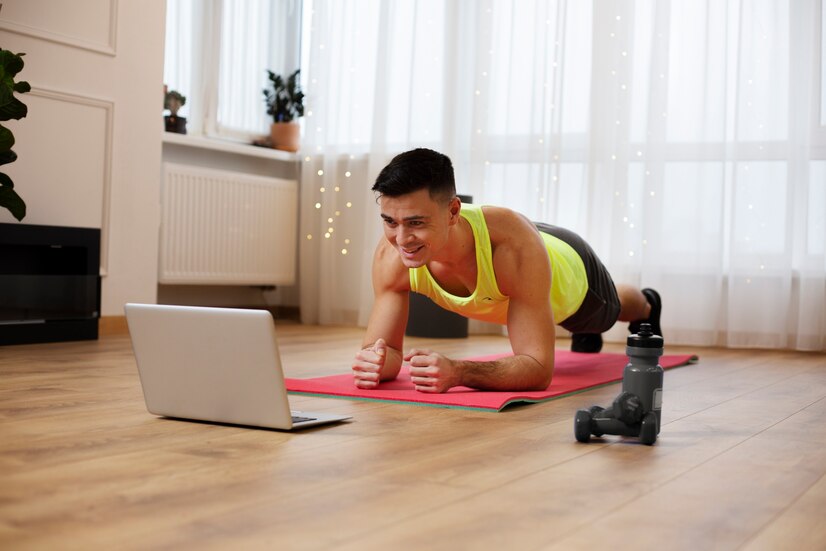
Tips for Maintaining Consistency:
Setting a regular workout schedule is the cornerstone of maintaining consistency. Choose specific days and times for your workouts and treat them as non negotiable appointments. This routine helps in forming a habit. Additionally keeping a workout diary not only allows you to track what you’ve done but also helps in planning future workouts. Setting small, achievable weekly goals like increasing the length of your workout or the number of reps provides a sense of accomplishment which fuels motivation.
Tracking Your Progress Effectively:
Effective progress tracking is more than just noting down the exercises. It involves observing changes in your performance such as increased endurance or strength. You can track simple metrics like how long you can hold a plank or the number of squats you can do comfortably. Also pay attention to how you feel after workouts. Improvements in mood, energy levels and sleep quality are strong indicators of your progress and can be highly motivating.
Nutrition and Hydration
Proper nutrition and hydration play a pivotal role in supporting your simple home workout routine. They are the building blocks for energy, recovery and overall wellbeing influencing the effectiveness of your exercise regimen. Understanding the basics of nutrition and hydration can significantly enhance your workout performance and health outcomes.

Or visit USDA MyPlate resource for balanced eating guidance
Basic Nutrition Tips for Workout Support:
A balanced diet is essential for supporting your workout efforts. This includes a mix of proteins for muscle repair and growth, carbohydrates for energy and healthy fats for overall health. Protein rich foods like chicken, fish, beans and tofu are great post workout to aid in muscle recovery.
Carbohydrates especially complex carbs like whole grains, provide the energy needed for exercise. Including a variety of fruits and vegetables ensures you get enough vitamins and minerals while healthy fats from sources like avocados and nuts are vital for joint health and overall wellbeing.
Importance of Staying Hydrated:
Hydration is crucial for both exercise performance and general health. Water regulates body temperature, lubricates joints and helps transport nutrients to give you energy. During workouts staying hydrated helps prevent fatigue, maintains endurance and aids in recovery.
Its important to drink water before, during and after exercise to compensate for the fluids lost through sweat. The amount of water needed can vary depending on the intensity of the workout and individual needs but generally drinking when you feel thirsty and ensuring your urine is light in color is a good practice.
Incorporating Flexibility and Balance
Flexibility and balance are crucial components of a well rounded fitness routine. They enhance overall physical performance, reduce the risk of injury and improve posture and functional movements in daily life. Including exercises that focus on these aspects can greatly complement your strength and cardio workouts.

Simple Stretching Exercises:
Stretching is vital for maintaining flexibility and preventing injury. Incorporating basic stretches before and after workouts can improve muscle elasticity and joint mobility. Dynamic stretches like leg swings and arm circles are ideal before a workout as they prepare the body for physical activity. Post workout, static stretches, where you hold a position for a period help in muscle recovery and flexibility. Regular stretching can also relieve muscle tension and enhance relaxation.
Balance Exercises for a Well Rounded Routine:
Balance exercises are often overlooked but are essential for building core strength and stability. Simple exercises like standing on one leg, heel-to-toe walking or yoga poses like the tree pose can significantly improve balance. These exercises not only enhance core strength but also aid in injury prevention by improving body awareness and coordination. Incorporating balance exercises into your routine can also improve concentration and mental focus making your workouts more efficient.
Overcoming Common Challenges
Addressing common challenges in simple home workout can significantly enhance your exercise experience. Whether it’s limited space or varying fitness levels understanding how to navigate these obstacles can make your workouts more effective and enjoyable.
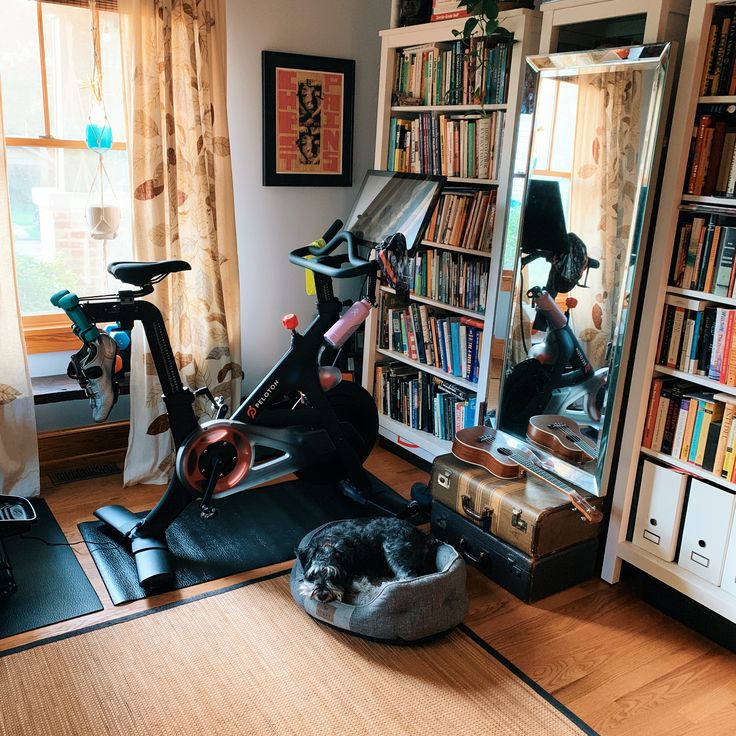
Dealing with Limited Space:
Limited space doesn’t have to limit your workouts. Focus on exercises that require minimal room like yoga, Pilates, or bodyweight exercises. Utilize vertical space for exercises like jumping jacks or use furniture as workout equipment like chairs for Triceps dips. Be creative with your space a clear area in your living room or moving a few pieces of furniture can provide enough room for a variety of exercises.
Adjusting Workouts For Various Fitness Needs:
Its important to tailor workouts to your individual fitness level and needs. Beginners should start with basic, low intensity exercises and gradually increase intensity. For those with more experience, adding weights or increasing reps can provide a greater challenge. Listen to your body and modify exercises as needed for example, use knee supported push ups if standard ones are too challenging or increase the speed of cardio exercises for more intensity. Remember the goal is consistent progress tailored to your personal health journey.
Advanced Tips for Progressing
When you’re ready to take your simple home workout to the next level, it’s important to do so in a way that maximizes effectiveness while minimizing risk. Advanced strategies can help push your fitness boundaries safely and effectively.
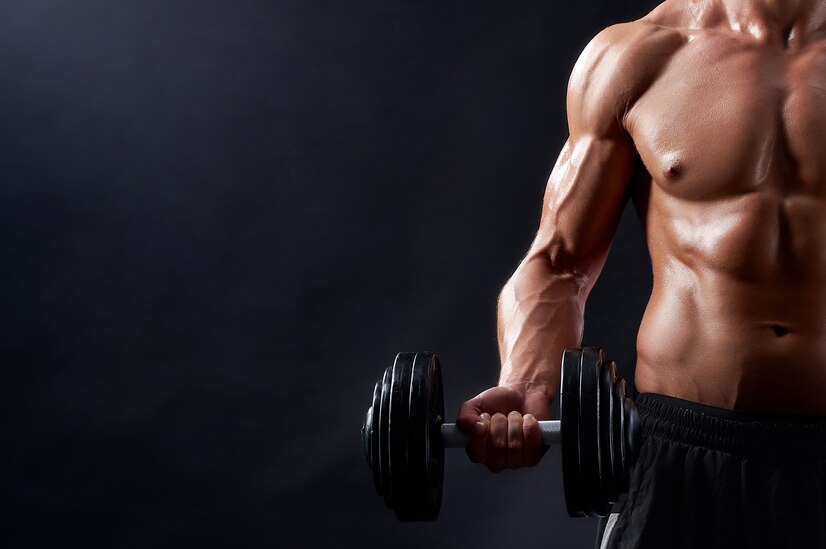
How to Safely Increase Workout Intensity:
Gradually increasing the intensity of your workouts is key to progress without injury. Start by adding more repetitions, sets or incorporating short bursts of high intensity exercises into your routine. Pay attention to your body’s response to these changes ensuring you allow adequate recovery time. Progress can also be made by reducing rest intervals between sets or increasing the duration of your workouts. Always prioritize proper form to prevent injuries.
Incorporating New Exercises and Equipment:
Adding new exercises and equipment can bring a refreshing challenge to your routine. Experiment with different types of workouts like Pilates, HIIT, or dance-based exercises to keep your routine exciting. Introduce new equipment like kettlebells, stability balls or resistance bands to enhance your workouts. This not only adds variety but also helps target different muscle groups improving overall fitness. Remember the key is to gradually introduce these elements, allowing your body to adapt to new challenges.
Conclusion
In the conclusion, it’s important to inspire readers to embrace their simple home workout journey. Emphasize the convenience and adaptability of exercising at home which can seamlessly integrate into various lifestyles. Highlight that progress in fitness is a gradual process requiring patience and consistency.
Encourage them to stay committed to their routines, celebrate small achievements and remain patient as results will come over time. The journey to better health and fitness is a personal and rewarding one and with dedication and perseverance their goals are attainable.
This guide draws upon the expertise of organizations like the American College of Sports Medicine (ACSM) to provide evidence-based strategies for safe and effective home workouts.


